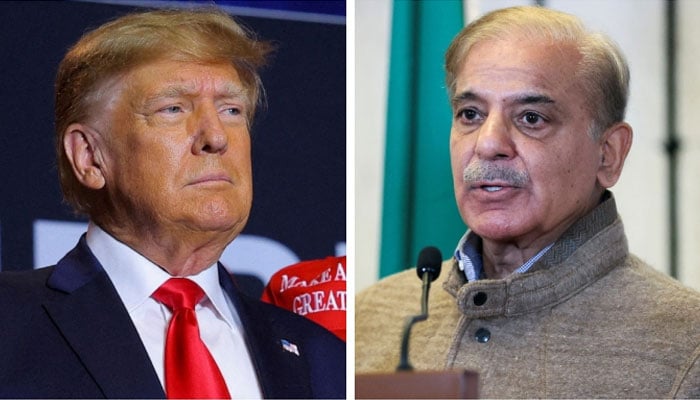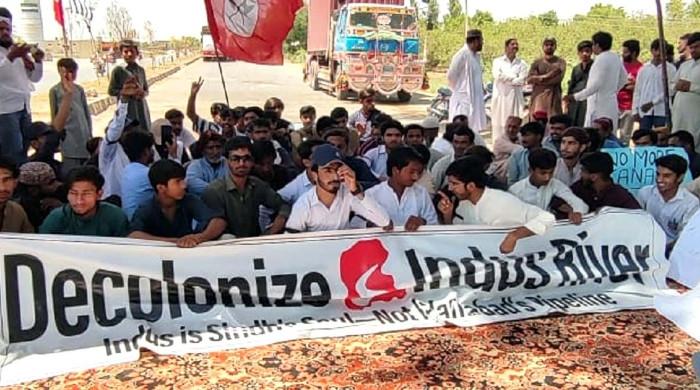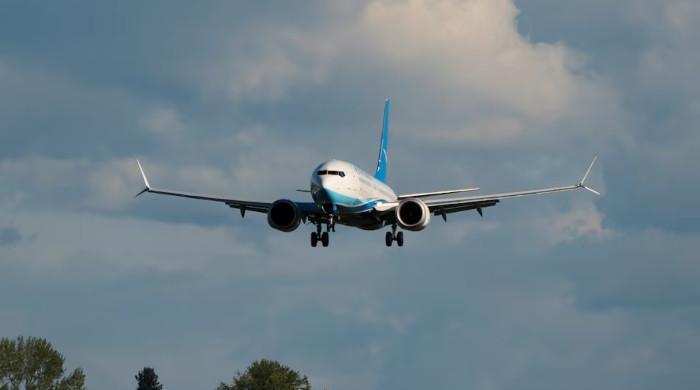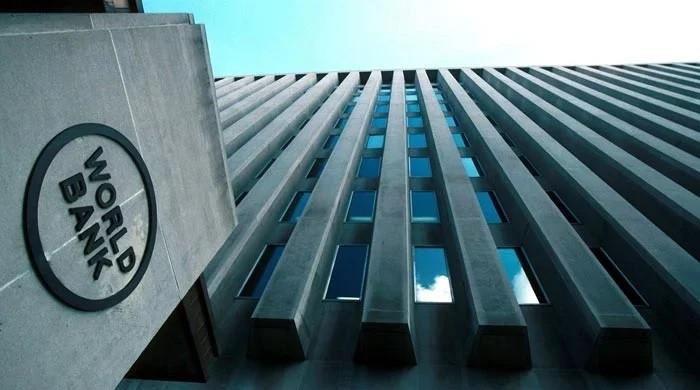PM Shehbaz constitutes 12-member committee for 'policy response' to Trump's reciprocal tariffs
Steering committee tasked to negotiate with US as a major trading partner on "as and when" required basis
April 04, 2025

- Committee tasked with conducting in-depth analysis of US tariffs.
- To guide, supervise working group on reciprocal tariffs.
- Deliberate, approve recommendations presented by working group.
Prime Minister Shehbaz Sharif has constituted a 12-member steering committee to deal with the reciprocal tariffs imposed by United States President Donald Trump on Pakistani goods, a move that could challenge the country’s export competitiveness.
"The prime minister has been pleased to constitute steering committee for in-depth analysis and policy responses to recently announced US Reciprocal Tariffs," stated a notification issued by the Prime Minister Office (PMO) on Friday.
The 12-member committee includes finance minister, commerce minister, petroleum minister, special assistant on industries, Federal Board of Revenue Chairman, Foreign Affairs Secretary, Pakistan Ambassador to US Rizwan Saeed Sheikh, Ambassador of Pakistan to World Trade Organisation (WTO) Ali Sarfaraz Hussain, former WTO envoy Dr Manzoor Ahmad, Ijaz Nabi, Minister Trade and Investment, Washington DC, and Secretary Commerce.
The move came after Trump imposed sweeping reciprocal tariffs on the US’s trading partners. The day was termed “Liberation Day” by Trump, who signed an executive order imposing a flat 10% tariff on almost all nations and then additional tariffs on those countries that the US accuses of charging higher levies on American goods.
The Trump administration imposed a 29% tariff on Pakistani imports, in addition to a 10% baseline tariff applied to all imports, bring the total tariff on Pakistani products to 39%.
In his remarks, President Trump said, "Pakistan has been charging us a 58% tariff on our goods. Hence, we are imposing a 29% tariff on their products."
The baseline 10% tariff will apply from April 5, 2025, with the additional 29% reciprocal tariff, starting April 9, 2025.
A senior official at the Commerce Ministry told The News that the move will reduce Pakistan’s price competitiveness and make it harder to maintain sales in the US market against “lower-tariff countries” such as India and Turkiye.
The penalties announced by Trump triggered a plunge in world financial markets and drew condemnation from other leaders reckoning with the end of a decades-long era of trade liberalisation.
Meanwhile, the notification — issued by the PMO on Friday — also stated the Terms of Reference (ToRs) of the working group.
The committee would guide and supervise the working group on US reciprocal tariffs; deliberate and approve the recommendations presented by the working group; negotiate with US as a major trading partner on as and when required basis; brief the premier on developments/initiatives basis regular regarding related; any other tasks as deemed appropriate by committee chair.
The 12-member committee could also appoint any additional members on need basis. "Ministry of Commerce Division shall notify the working group and provide secretarial support," it added.
Tariffs' impact on Pakistan
The move has virtually replaced Pakistan’s trade status under the Generalised System of Preferences (GSP), which offered lower duties (typically 4-5%) on certain goods.
The US is Pakistan’s largest single-country export market, with exports valued at approximately $6 billion annually, predominantly textiles.
Certain goods such as copper, pharmaceuticals, semiconductors, lumber, gold, and energy are exempt from the reciprocal tariffs, as per a White House fact sheet, though they may still face the 10% baseline unless otherwise specified.
However, the new reciprocal tariffs established by the US president’s order are in addition to any other duties, fees, taxes, exactions, or charges applicable on some articles such as if the existing tariff on synthetic apparel is 32%, the new tariff will be 61% (32+29), reveals a paper prepared for the premier by the Commerce Ministry about the impact of the US tariffs on Pakistan exports.
However, All Pakistan Textile Mills Association (Aptma) Secretary General Shahid Sattar said Pakistan will have a “marginal impact” on exports, as the regional economies face more tariffs than Pakistan.
He highlighted that Bangladesh faces 37% reciprocal tariff plus a 10% baseline tariff, Sri Lanka 44% plus 10%, Vietnam 40% plus a 10% baseline tariff, and China 34% plus a 10% baseline tariff.
However, Washington says if any country reduces tariffs on US products, it will further reduce duties on that country’s products. He suggested that Pakistan should reduce the tariffs on US products. He said the textile industry is importing cotton from the US on zero duty.
The paper prepared by the Commerce Ministry says the tariff hike significantly increases the cost of Pakistani goods in the US, potentially reducing export competitiveness, especially in textiles, which account for a major share of its $6 billion in annual exports to the US.
This could lead to job losses in export-driven industries, a wider trade deficit, and higher consumer prices domestically if Pakistan retaliates or shifts trade elsewhere.
While some analysts suggest lower global commodity prices from trade disruptions might offset import costs for Pakistan, the immediate effect on its US-bound exports is likely to be negative, given the market’s importance (about 19% of Pakistan’s total exports in the first half of FY25).
This policy aligns with Trump’s broader strategy to shrink the US trade deficit ($918.4 billion in 2024) and boost domestic manufacturing, though Pakistan’s trade surplus with the US ($3 billion in 2024) is relatively small compared to giants like China.
The exact impact will depend on Pakistan’s response, potential negotiations and whether it can redirect exports to other markets. For now, the 39% total tariff marks a sharp escalation from prior concessionary rates, reflecting the administration’s aggressive stance on reciprocity.
Under the latest scenario, Pakistan will have a cost advantage of 46% over Vietnam, 49% over Indonesia, 49% over Cambodia, 54% over China, and 37% over Bangladesh. However, Pakistan will face a cost disadvantage of 26% over India, 10% over Turkey and 23% over Jordan, Egypt, and Central America.
This means Pakistan may still be competitive against higher tariff-hit nations but may struggle against lower tariff markets such as India and Turkey.
This new tariff is not applicable on the goods having more than 20% of the US originating material. Pakistani entrepreneurs will still have an option for the industry to use US cotton more and avail exemption.











